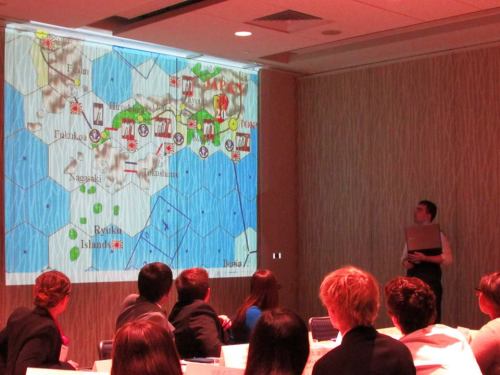This guest article was submitted by Jack Ludtke, Georgetown University, Class of 2017 to help delegates prepare for crisis at NAIMUN.
The crisis arc is one of the most mercurial aspects of the modern Model UN circuit. A good crisis arc can create an engaging frame for fast-paced debate and guide delegates through a time period towards the goal of learning tangible lessons that will apply to modern-day conflicts. A bad crisis arc, on the other hand, can create disjointed, stunted debate that aimlessly wanders through a historical event. Both can be perfectly fun Model UN exercises, but a good crisis arc certainly gives a committee more substance and gives delegates the chance to more directly learn about their given topic.
So how does one create a good crisis arc? Fortunately, there is no one right answer. It is entirely possible that, with a talented Crisis Manager/Crisis Director and invested staff, a committee can follow an unorthodox structure and be successful. Above all, your crisis team will create a system and arc that they feel suits the subject and pace of action; don’t be afraid to ask them about their vision for how the committee should progress!
This being said, there are classical models that most crisis arcs follow, and that most Crisis Managers and Directors follow. Among these, the most used are generally the crisis tree, the checklist, and the freeform model.
The crisis tree is the most rigid and simple model of crisis arcs. The basic idea is that the committee starts at a single point (the “trunk” of the tree) and splits off whenever a decision is made. This split, or “branching off”, is generally set beforehand by the Crisis Manager/Director and shows the two different directions that the committee could go in. Before long, after a few crisis cycles (a cycle lasting from the introduction of a crisis to the next) the arc will have many “branches”, giving this model its name. This arc is generally used when the CM/CD has planned crises that are very black and white, or when the pace of crisis is slow. Delegates may interface with the crisis tree, but it will require the CM/CD to adjust the tree to allow for any unforeseen action.
The checklist features a balance between rigid and flexible crisis elements. As the name suggests, the checklist a simple list of events, or crisis points, the CM/CD wants to reach. For example, if there are five or six committee sessions in the weekend at a typical North American Model UN conference, the checklist CM/CD might have one or two points per session. In between these major crisis events, the CM/CD will allow the delegates to explore and forge their own paths between the events. If all goes well, the CM/CD will have surmised some of the directions delegates will go and allow them to create their own personal crisis arcs. However, it cannot be emphasized enough that there is no stronger tool in the crisis delegate’s repertoire than creativity. If a delegate constructs a particularly clever crisis arc, you will often find that the CM/CD will incorporate this new action into their main arc. Both in college and high school, the most successful MUN delegates are the ones that not only convince their peers to follow them, but also the people organizing the committee.
The freeform model is the most flexible of the basic crisis arc. Often used in the most competitive of MUN circumstances, this calls upon the wherewithal of the delegates involved to craft their own crisis arc. Basically, the CM/CD in this role is a facilitator of the delegate’s individual arcs, and allows their private actions to wholly influence the crises the committee encounters. The freeform model is the most challenging of all models; the CM/CD can lose control very quickly if they do not steer delegate’s arcs neatly, delegates can either exponentially speed up or slow down crisis arcs, and a large staff is generally needed to maintain the complex story lines that arise from this method. However, if the delegates are on the same page, the CM/CD is of exceptional skill, and if staffing is sufficient to support the number of delegates, the freeform model can yield some of the most rewarding committee experiences. In no other model are delegates given the option of completely defining their own arc and direction; having the capacity to do so is one of the most rewarding experiences a crisis delegate can undergo.
As stated beforehand, there are no right answers when it comes to crisis arcs! Great committees can arise from even the most unorthodox style, and subpar committees can arise from even the most meticulously planned preparation. So don’t worry if your crisis plans aren’t going completely to plan! Committees, and MUN conferences in general, are really made worth doing by the people that you meet and have the chance to work with. Ultimately, the best thing a delegate can do when interfacing with a crisis arc is remain patient. The CM/CD may be dealing with elements outside their control, or facing an extreme influx of notes, or even preparing the next crisis event. Be sure to remain understanding, and above all, don’t be afraid to talk to your CM/CD if you are experiencing difficulties!



